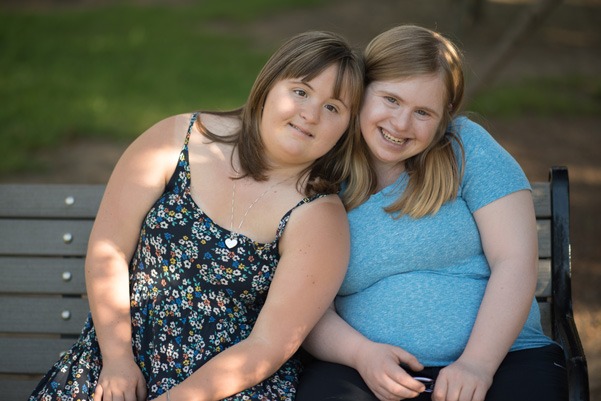Down syndrome is a genetic condition that causes delays in physical and intellectual development. It occurs in 1 in every 792 live births. Individuals with Down syndrome have 47 chromosomes instead of the usual 46. It is the most frequently occurring chromosomal disorder in the world. Down syndrome is not related to race, nationality, religion or socioeconomic status. The most important fact to know about individuals with Down syndrome is that they are more like others than they are different.
What Causes Down syndrome?
Global Down Syndrome Foundation: Facts and FAQ About Down Syndrome
National Down Syndrome Society: What is Down Syndrome?
National Association for Down Syndrome: Facts About Down Syndrome
Tools & Talking Points
There are a lot of misconceptions regarding Down syndrome. DSIA works hard to provide accurate and up to date information to help debunk outdated myths and stereotypes that exist.

Did you know?
People with Down syndrome…
- Are living independently in their communities with some support
- Are often fully included in school with their typical peers
- Are going to college more frequently
- Are employed as artists, actors, child care workers, among many other careers!
- Enjoy healthy relationships and some get married
Questions Kids may Ask About Down Syndrome
People First Language
People with Down syndrome should always be referred to as people first.
Instead of “a Down syndrome child,” it should be “a child with Down syndrome.” Also avoid “Down’s child” and describing the condition as “Down’s,” as in, “He has Down’s.”
Does your health care team need a workshop on Down Syndrome and People First Language? We can Help! Please contact us!
Transitions
Every year, millions of people around the world finish their secondary or high school studies and go on to something else. But, if you have Down syndrome or a related disability, there is a name for it! It is named “transition”.
Otherwise, it is just the question “What are you doing next year?”
We are all constantly transitioning throughout our lives. We go from one grade to the next, from one job to another, or from living at home to living on our own.
While all of us handle change in our own way, major transitions often give rise to conflicting feelings. For example, we might look forward to new experiences, yet worry about the unknown. Taking adequate time to prepare and planning well are the best ways to alleviate the stresses that can accompany transition.
With that in mind, it is important for individuals with Down syndrome and their families to begin thinking about one of the most important transitions of all — the move from high school to life after high school — and to encourage them to start making plans as early as possible.
Aging & Health
People with Down syndrome are living longer than ever before. Learning about common conditions and issues encountered in adulthood can help prepare for a healthy future.
Adults with Down syndrome are now reaching old age on a regular basis and are commonly living into their 50s, 60s and 70s. While there are many exciting milestones that accompany growing older, old age can also bring unexpected challenges for which adults with Down syndrome, their families and caregivers may not feel adequately prepared. In order to enjoy all the wonderful aspects of a longer life, it is important to be proactive and learn about issues that may lie ahead.
Down Syndrome: A Health & Wellness Book

Other Resources
The following is a list of local and national resources our members may find helpful in supporting individuals with Down syndrome.
